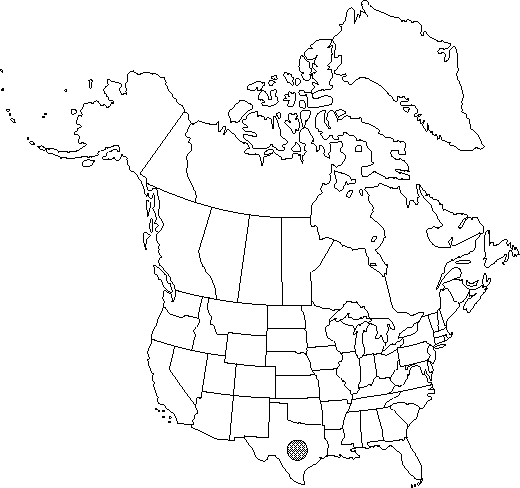Berberis swaseyi
Famil. Lessons Bot., 152. 1873.
Shrubs, evergreen, 1-2 m. Stems ± dimorphic, with elongate primary and short or somewhat elongate axillary shoots. Bark of 2d-year stems purple, glabrous. Bud-scales 1.5-4 mm, deciduous. Spines absent. Leaves 5-9-foliolate (basal pair of leaflets sometimes reduced to bristles); petioles 0.1-0.5 cm. Leaflet blades thin or thick and rigid; surfaces abaxially dull, papillose, adaxially dull, somewhat glaucous; terminal leaflet stalked (sessile in a few leaves), blades 1.8-3.5 × 0.7-1.7 cm, 1.3-4.7 times as long as wide; lateral leaflets oblong to elliptic or lanceolate, 1-veined from base, base truncate to obtuse, rarely acute, margins plane or undulate, toothed, each with 3-8 teeth 0.5-2 mm high tipped with spines to 0.6-1.2 × 0.1-0.2 mm, apex rounded to acuminate. Inflorescences racemose, lax, 2-6-flowered, 4-6 cm; bracteoles leathery, apex spinose-acuminate, sometimes with proximal bracteoles as described, distal membranous and acuminate. Flowers: anther-filaments with distal pair of recurved lateral teeth. Berries white or red and somewhat glaucous, spheric, 9-16 mm, dry or juicy, hollow.
Phenology: Flowering winter–spring (Feb–Apr).
Habitat: Limestone ridges and canyons
Elevation: 150-600 m
Discussion
Berberis swaseyi is endemic to the Edwards Plateau. According to M. C. Johnston (pers. comm.), B. swaseyi and B. trifoliolata hybridize in central Texas.
Berberis swaseyi is susceptible to infection by Puccinia graminis.
Selected References
None.
Lower Taxa
"thick" is not a number. "thin" is not a number.
